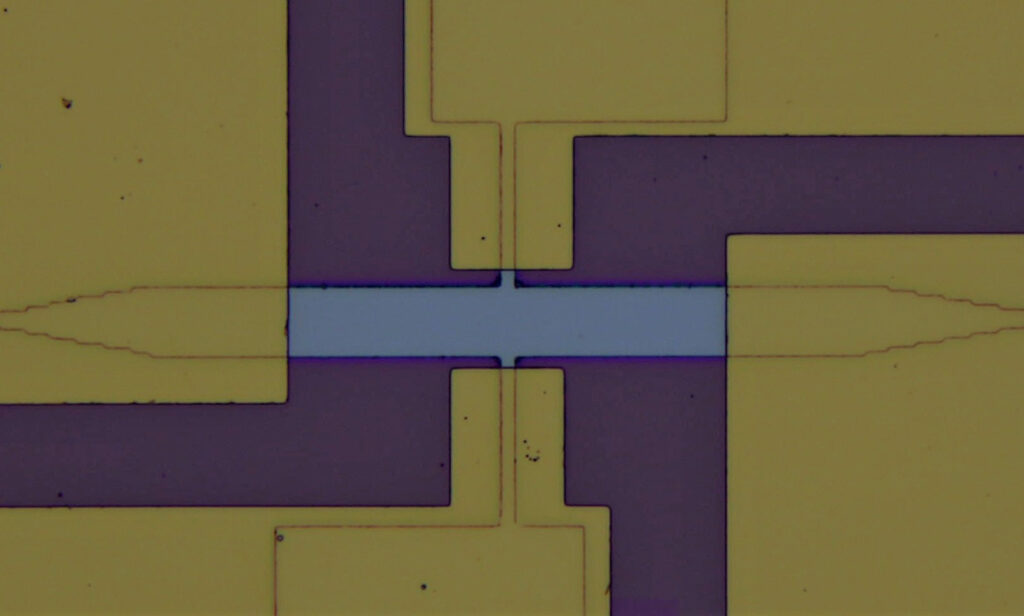
Magnetic memory could get a boost from materials that promise more reliable storage at greater densities
Quasi-magnetic materials known as antiferromagnets are attracting research interest for their potential to hold far more data in a computer’s memory than traditional magnets allow.
Though the early work required to prove the concept has only just begun, a series of new studies shows progress in being able to electrically manipulate bits stored in antiferromagnets and to do so with components compatible with standard CMOS manufacturing techniques.
Antiferromagnets exhibit different properties from traditional ferromagnets, which are used in a variety of modern memory technologies including magnetoresistive random-access memory (MRAM).
MRAM has clear advantages over other memory technologies. Reading and writing data using MRAM can be done at speeds similar to those of volatile technologies such as DRAM and SRAM. But MRAM consumes less power and, like flash, is nonvolatile, meaning it doesn’t need a steady power supply to retain data.
Despite its advantages, MRAM could still be considered a boutique memory technology. And in theory, at least, antiferromagnets could fix a problem that has prevented MRAM from achieving broader adoption.
MRAM stores information as the spins of electrons—a property related to an electron’s intrinsic angular momentum. Ferromagnets have unpaired electrons that spin, or point, in one of two directions. Most electrons in a ferromagnet point in the same direction. When a current runs nearby, its magnetic field can cause most of those electrons to change their spins. The magnet records a “1” or a “0” depending on which direction they point.
A drawback of ferromagnets is that they can be influenced by external magnetic fields, which can cause bits to flip unintentionally. And the spins of adjacent ferromagnets can influence one another unless there’s enough space between them—which limits MRAM’s ability to scale to higher densities for lower costs.
Antiferromagnets—which include compounds of common metals such as manganese, platinum, and tin—don’t have that problem. Unlike with ferromagnets, the spins of electrons within the same antiferromagnet don’t all point in the same direction. Electrons on neighboring atoms point opposite to each other, effectively canceling one another out.

The collective orientation of all spins in an antiferromagnet can still record bits, but the magnet as a whole has no magnetic field. As a result, antiferromagnets can’t influence each other, and they aren’t bothered by external fields. Which means you can pack them in tight.
And because the dynamics of the spin in antiferromagnets are much faster, bits can be switched in picoseconds with terahertz frequencies—much faster than the nanoseconds required at gigahertz frequencies used in today’s ferromagnetic MRAM. Theoretically, antiferromagnets could increase the writing speed of MRAM by three orders of magnitude.
Only in the past five years have antiferromagnets been seriously investigated for their potential in memory, since researchers in Europe demonstrated it was possible to use an electric current to control the spins of electrons within an antiferromagnet. That work has led to a flurry of research investigating different types of antiferromagnets and switching techniques.
“There are a very wide range of antiferromagnetic materials one could choose,” says Pedram Khalili-Amiri, an associate professor of electrical and computer engineering at Northwestern University. “There’s more of them than there are ferromagnets. This is a blessing and a curse.”
Researchers have reported several advances using antiferromagnets since the start of this year. Khalili-Amiri led a team that showed switching in tiny pillars of platinum manganese, an antiferromagnet used in hard drives and magnetic field sensors today. The team described its work in February in Nature Electronics. “We wanted to build a device that was CMOS-compatible,” he says.
In March, a group involving Markus Meinert of the Technical University of Darmstadt in Germany wrote in Physical Review Research of an experiment showing a novel MRAM technique for switching bits, known as spin-orbit torque, that could also work for switching bits stored in one type of antiferromagnet.
And in April, Satoru Nakatsuji at the University of Tokyo and his collaborators described in Nature an experiment that successfully switched bits in an antiferromagnet (Mn3Sn) that has a particular type of electrons known as Weyl fermions. The spin states of these fermions are relatively easy to measure and allow for a device to be much simpler than other antiferromagnetic devices.
Despite this progress, Barry Zink from the University of Denver says it’s too early to bet on any one type of antiferromagnet. “It’s a really exciting field. I think it’s not clear yet just exactly which material, or if just one of them by itself, is going to be the winner in all this,” he says.
A number of technical challenges would have to be resolved before antiferromagnets could ever be used in commercial devices. One issue that Zink has written about is that heat from a current appears to cause a voltage pattern in some antiferromagnetic devices that looks similar to what a switch in electron spin may cause. To read data back, it will be important to distinguish between the two.
And reading data from an antiferromagnet is still much slower and more difficult than reading data stored in ferromagnets. “We need to find ways of reading more efficiently,” says Meinert.
Already, companies are beginning to take note. Though he declined to share names, Nakatsuji says he’s been contacted by large technology companies for his lab’s work on antiferromagnets. “I think in the near future, a lot will become possible,” he says.
